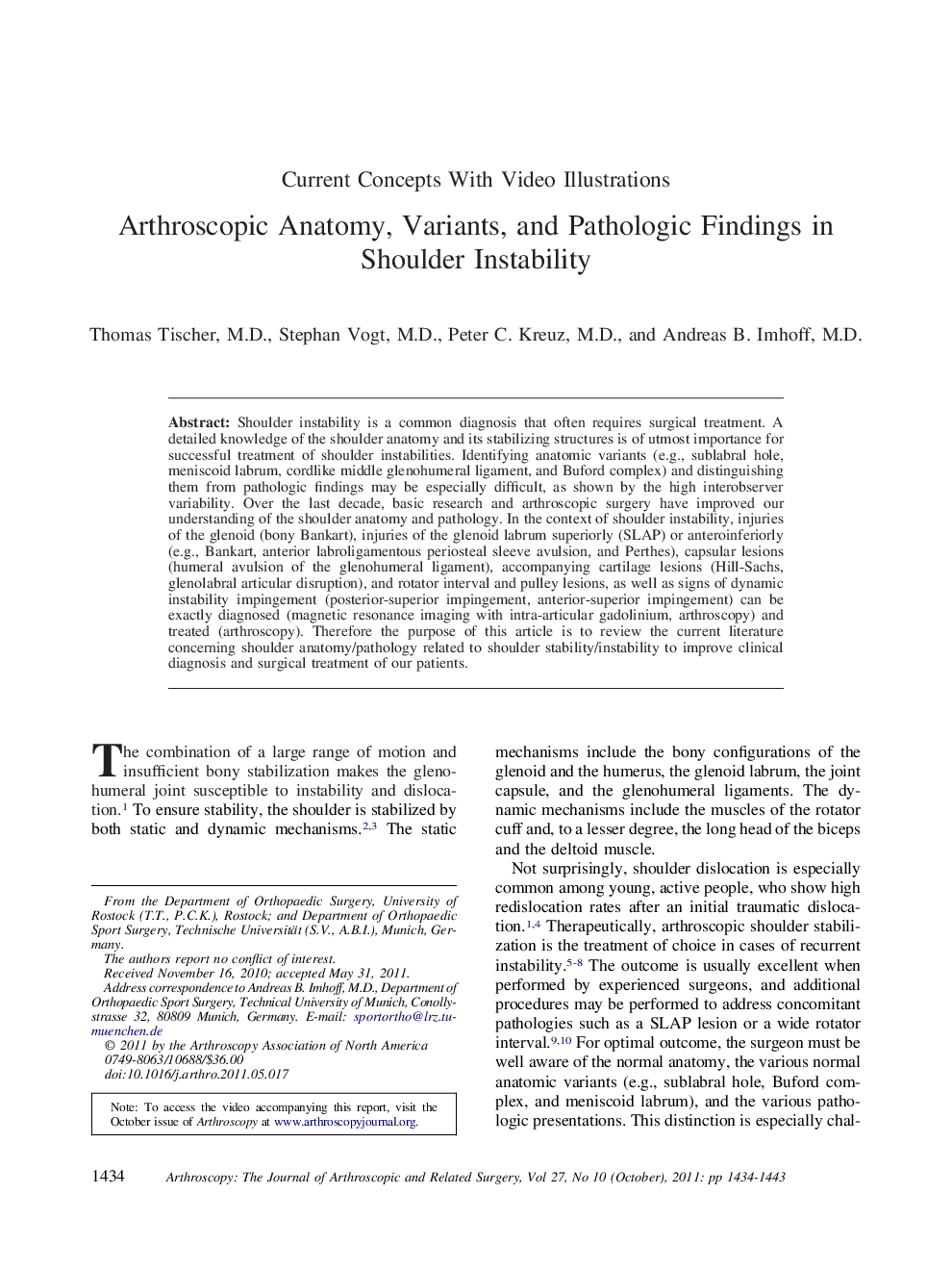| Article ID | Journal | Published Year | Pages | File Type |
|---|---|---|---|---|
| 4044433 | Arthroscopy: The Journal of Arthroscopic & Related Surgery | 2011 | 10 Pages |
Shoulder instability is a common diagnosis that often requires surgical treatment. A detailed knowledge of the shoulder anatomy and its stabilizing structures is of utmost importance for successful treatment of shoulder instabilities. Identifying anatomic variants (e.g., sublabral hole, meniscoid labrum, cordlike middle glenohumeral ligament, and Buford complex) and distinguishing them from pathologic findings may be especially difficult, as shown by the high interobserver variability. Over the last decade, basic research and arthroscopic surgery have improved our understanding of the shoulder anatomy and pathology. In the context of shoulder instability, injuries of the glenoid (bony Bankart), injuries of the glenoid labrum superiorly (SLAP) or anteroinferiorly (e.g., Bankart, anterior labroligamentous periosteal sleeve avulsion, and Perthes), capsular lesions (humeral avulsion of the glenohumeral ligament), accompanying cartilage lesions (Hill-Sachs, glenolabral articular disruption), and rotator interval and pulley lesions, as well as signs of dynamic instability impingement (posterior-superior impingement, anterior-superior impingement) can be exactly diagnosed (magnetic resonance imaging with intra-articular gadolinium, arthroscopy) and treated (arthroscopy). Therefore the purpose of this article is to review the current literature concerning shoulder anatomy/pathology related to shoulder stability/instability to improve clinical diagnosis and surgical treatment of our patients.
